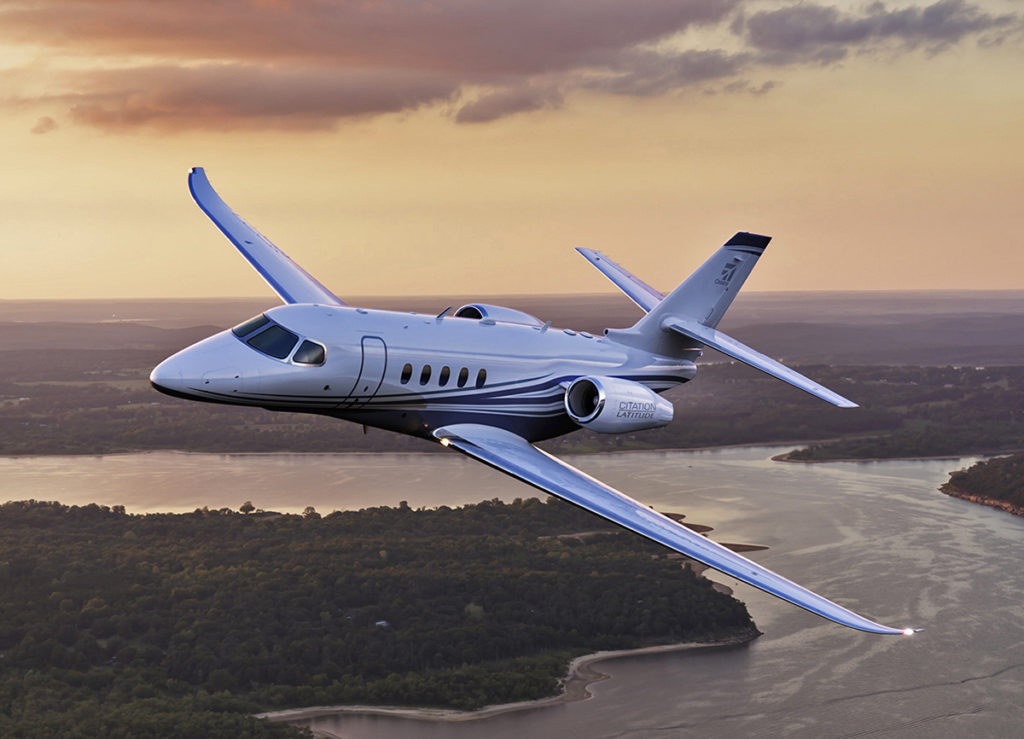Honeywell’s 32nd annual Global Business Aviation Outlook forecasts up to 8,500 new business jet deliveries worth $278 billion from 2024 to 2033, in line with the same 10-year forecast a year ago.
The Upward Trajectory
Honeywell’s latest report reveals a consistent projection, aligning with last year’s 10-year forecast. The data indicates that the business aviation industry is on an upward trajectory, displaying optimism and an increase in confidence among operators.
In fact, surveyed operators are reporting higher five-year new jet purchase plans, a significant 2% increase from the previous year.
What’s even more striking is the remarkable surge in fleet expansion rates. Compared to the average of the past decade, fleet expansion in 2023’s survey has nearly tripled, showcasing an industry that’s eager to expand and meet growing demand.

[monsterinsights_popular_posts_inline]
Business Jet Operators Embrace Expansion
Heath Patrick, President of Americas Aftermarket at Honeywell Aerospace, aptly sums up the industry’s sentiment, “Our industry is on the upswing. Operators are showing confidence with plans to expand their fleets at a faster rate than any time in the previous decade.”
Additionally, there’s a notable shift towards sustainability, with operators keen to reduce carbon emissions.
This commitment to sustainability is mirrored by a 6% increase in flights and a demand for 500 more aircraft over the next decade.
Key Findings in 2023
Let’s delve into the key findings of the 2023 Honeywell Global Business Aviation Outlook:
Upward Trend in Deliveries: New business jet deliveries in 2024 are projected to be 10% higher than in 2023. The associated expenditures are expected to increase by 13%.
Increased Purchase Plans: Five-year purchase plans for new business jets have risen by 2%, surpassing 2019 levels and equivalent to 19% of the current fleet.
Growing Fleets: Fleet additions have been consistently growing for three years, exceeding 3% of the current fleet.
Steady Growth: New jet deliveries and expenditures over the next decade are expected to grow at an average annual rate of 2%, aligning with expected worldwide long-term economic growth.
Continued Flight Activity: A significant portion of surveyed operators expect to fly as much in 2024 as they did in 2023, indicating a robust industry.
Aircraft Preferences: Large, long-range, and ultra-long-range aircraft classes are predicted to account for approximately 69% of all expenditures on new business jets in the next five years.
Disposal of Aircraft: Interestingly, 4% of surveyed operators plan to dispose of an aircraft without replacement, double the rate of 2022. The reasons vary from retirement to the change in ownership.

Sustainability in Business Aviation
In an age where environmental consciousness is paramount, Honeywell is making significant strides towards carbon neutrality by 2035.
This commitment extends to driving aviation sustainability with a range of solutions aimed at creating a greener future for the sector. The survey highlights this commitment with some essential insights:
Sustainability Initiatives: Nearly 60% of surveyed operators are actively implementing methods to reduce their carbon footprint, a 10% increase from the previous year.
Methods for Sustainability: The most popular methods for reducing carbon footprint include favoring commercial flying over private jet trips (31%) and adopting slower cruising speeds (18%).
Future Sustainability: Two-thirds of operators plan to adopt or increase methods for more environmentally friendly operations in the future. Sustainable Aviation Fuel (SAF) is seen as a common way to achieve this goal.
Incentives Matter: 33% of operators cited economic incentives, such as tax benefits or operating cost savings, as the primary factors compelling them to adopt sustainability methods.
Regional Outlook
Honeywell’s report also provides valuable insights into regional trends and expectations:
North America
North American operators account for a significant 64% of the five-year new jet deliveries, with a positive outlook driven by economic optimism.
Europe
European operators make up 14% of the five-year new jet deliveries, albeit a slight decrease from the previous year due to economic uncertainty and a strong focus on sustainability.
Latin America
Latin American operators contribute 5% to global deliveries over the next five years, with economic concerns impacting their outlook.
Asia Pacific
This region is expected to make up 11% of new business jet demand over the next five years, with impressive aviation utilization growth in 2023.
Middle East/Africa
Fleets in this region will account for 6% of the five-year new business jet deliveries, reflecting substantial growth in Bizav flights in 2023.
Preowned Aircraft
The survey indicates that five-year purchase plans for used jets amount to 27% of the current fleet. This hints at a slight increase in the availability of preowned jets for sale.
The Impact of New Users
The COVID-19 pandemic brought a surge in first-time private aviation users and buyers, leading to a significant spike in flight activity.
However, in 2023, global flight activity experienced a decline, largely attributed to factors like inflation and the resumption of commercial air service on key routes.
Nevertheless, it’s expected that flight activity will stabilize in 2024, driven by IPOs, corporate profits, and easing inflation rates.

Click the banner to subscribe to our weekly newsleter.









